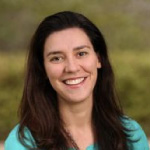Educating As If We Are Already There

“I want to ask you a question, and that is: What is your life’s blueprint?”
Dr. Martin Luther King Jr. asked this of Philadelphia’s Barratt Junior High students in 1967. When I read his speech at the King Center in Atlanta it made me think of my role as an educator because Dr. King’s question is ours. As a PreK-12 school, we are responsible for 14 years or 17,640 on-campus hours of a child’s education. How we spend that time informs a life blueprint for all future building. If Malcolm Gladwell is right and 10,000 hours makes an expert, each child puts in 7,640 extra hours. Our students can almost get a double major.
What are they becoming experts in?
On the first day of school we asked students a question similar to Dr. King’s, not to draw a blueprint for their lives, but to make a golden record to convey the values of our school community. Have you heard of NASA’s Golden Records? Before they launched the Voyager mission, Carl Sagan had an idea: outfit these deep space probes with a calling card about our planet. On each Voyager probe, he placed a literal golden record to explain humanity. If an intelligent extraterrestrial civilization encounters these spacecrafts, they will receive a message from Sagan’s team. On the front of the records, he engraved images about earth: a hydrogen atom, our location in the universe, and instructions, in binary, for how to play the “murmurs of the earth” audio held in the record’s grooves. Fun fact: the Golden Records were made in San Carlos, California, and are now the furthest-from-earth human-made object ever to be in space, past the boundaries of our solar system.
On the first day of school, students designed NASA-like golden records, prototype style. In cross-graded groups, they invented symbols to explain our school’s community to the universe at large. Old-fashioned vinyl records from the thrift store covered in gold paper were adorned with sharpie images, becoming artifacts about our values. As part of this exploration, we consulted the etymonline dictionary to find that community means: “belonging to all, owned or used jointly.” It comes from “ko” for together and “moi” to go, move. At its root, community is “going together.”
Where are we “going together” this year? My hope, my entry for our school’s golden record was “somebodiness,” an invented word from King’s speech:
“Number one in your life’s blueprint should be a deep belief in your own dignity, your worth and your own somebodiness. Don’t allow anybody to make you feel that you’re nobody. Always feel that you count. Always feel that you have worth, and always feel that your life has ultimate significance.”
Somebodiness. The ability to see the worthiness in ourselves, and then equally in one another, is the way to make positive change. That’s in the blueprint of King’s concept of Beloved Community carved into the wall at the King Center. I hope it’s the blueprint of the communities we create in our schools, too.
Back in Atlanta, my family walked across the street to the iconic Ebenezer Baptist Church. We were a group of four: Me, a white woman from the Bay Area; my Trinidadian husband; his cousin; and her 10-year old son whom we’d nicknamed Jackpot because he won 500 tickets on the first skee-ball game he ever played.
The church hasn’t changed much. In the sanctuary, people sit in pews facing the empty pulpit and Dr. King preaches. His voice echoes and booms, filling the bright spare room just like you’d imagine. The recording achieved time-travel magic and I was overcome. Explaining to my brown-skinned nephew why his auntie started crying was another thing. Generations seemed to compress: The founders of this space, alive during Reconstruction, were the first generation of free African-American people. A baby born to freed slaves the day Ebenezer Baptist Church was founded would have been 75-years-old when MLK Jr. became a pastor. People in this place imagined a better version of their world despite the chorus of voices telling them it was not theirs to have. In their blueprint was a belief in dignity, self-worth, and justice which allowed them to raise not just a church, but a movement. Their work made it legal, I told him, for us to be a family. Their blueprint is in ours and we have to keep building on what they drafted.
In an interview with OnBeing.org, John Lewis described how Dr. King lived as if he were already there and how we can draw from that same source of strength as educators:
“You have to have this faith that what you’re moving toward is already done. It’s already happened. It’s the power to believe that you can visualize that sense of community, that sense of family, that sense of one house. And you live that you’re already there. If you visualize it, if you can even have faith that it’s there, for you, it is already there.”
This power runs through the heart of a student-centered education. We start with a four-year-old and live as if we can see the healthy and whole high-school senior already there. By explicitly naming “already there” thinking, we can employ it as a tool in schools when we need to get from where we are to a more dynamic, just, or student-centered community. In the beginning of the year, everything seems possible. Half-way through the school year, when things are hard and there’s real harm to repair, the child’s behavior is not getting better, or the classroom energy stalls, an “already there” mindset will be necessary instead of just lovely.
To employ this mindset, school teams can work together to:
- Build a Foundation: Explore the practices of Restorative Justice in Education and the concept of Beloved Community. Ensuring community members have their “somebodiness” intact is step one.
- Get Inspired: Play or read Dr. King’s “Blueprint” speech and ask students (or faculty) to draw a blueprint of their lives, adding values instead of objects to each room.
- Build a Shared Vocabulary: Introduce the concept of “already there thinking” to your team.
- Do a Thought Experiment: Choose a challenge in your school. Imagine it solved and you are already where you want to be. What would that look like? To use Lewis’ words, what’s the sense of “one house” you can already see?
- Take Action: Make a list of how you could start acting as if you were already there. Put it up in your space as your blueprint. I want us to teach kids, before they believe otherwise, that they can build the more just, beautiful, interesting, golden world they imagine. As a school, we are “going together” as if we were “already there,” finding strength and solutions are now visible with this paradigm. In the 17,640 hours of students’ lives we share, I hope we will help them know their somebodies, to reach for interstellar space and for social justice, or some new nexus of the two. I hope all our school communities are places that encourage young people to draft these clear and brilliant blueprints and to live as if we they are already there.
Notes:
The version of the Blueprint speech at the King center is one page and doesn’t indicate any internal edits, so when I watched the full version on YouTube (also linked above) I was surprised to see how significantly it had been shortened. They’d removed the references to civil rights and racial justice, to the dangers of hair straightening and skin lightening. The King Center version is quoted here but know there is key context, and therefore intention, missing from this “universalized” excerpt that really shouldn’t be removed. Watch it to see what I mean.
 Liza Raynal deeply appreciates Nueva’s unique progressive and constructivist approach. As a Nueva alum and former teacher, now head of Nueva’s Middle School, Liza works closely with faculty and staff to maintain an environment of innovation and reflection for the next generation of Nueva students. After completing her degree at UCLA and Brown University, Liza won a fellowship for emerging leaders and spent a year studying the art of carnival and performance in Trinidad. In 2006 she returned to Nueva to join the faculty as a middle school writing and arts teacher and seventh-grade dean. A Nueva kid at heart, she particularly looked toward the intersections between academic disciplines and in 2010 was selected by the Institute of International Education to be a Toyota teacher fellow. This experience brought her to the Galápagos Islands where she learned about environmental stewardship and global citizenship, leading to the development of a curriculum for her writing class built around Darwin’s discoveries.
Liza Raynal deeply appreciates Nueva’s unique progressive and constructivist approach. As a Nueva alum and former teacher, now head of Nueva’s Middle School, Liza works closely with faculty and staff to maintain an environment of innovation and reflection for the next generation of Nueva students. After completing her degree at UCLA and Brown University, Liza won a fellowship for emerging leaders and spent a year studying the art of carnival and performance in Trinidad. In 2006 she returned to Nueva to join the faculty as a middle school writing and arts teacher and seventh-grade dean. A Nueva kid at heart, she particularly looked toward the intersections between academic disciplines and in 2010 was selected by the Institute of International Education to be a Toyota teacher fellow. This experience brought her to the Galápagos Islands where she learned about environmental stewardship and global citizenship, leading to the development of a curriculum for her writing class built around Darwin’s discoveries.
